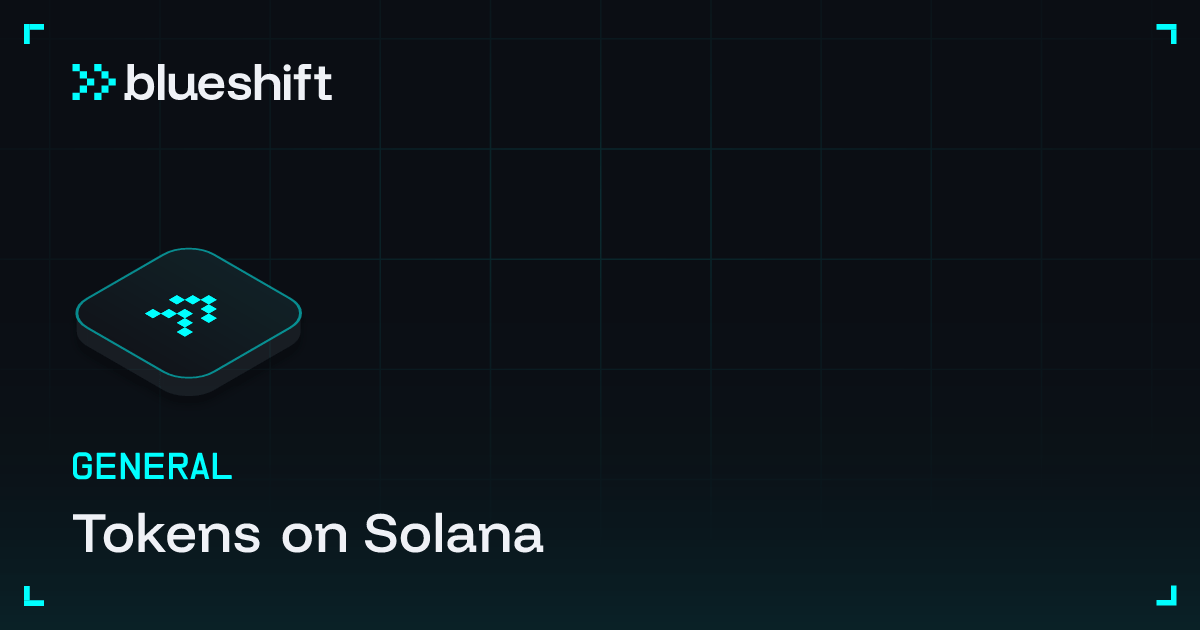Tokens on Solana

Tokens are digital assets that represent ownership, access rights, or value on a blockchain network. Think of them as programmable certificates that exist entirely in digital form: they can represent anything from money and ownership stakes to voting rights and access passes.
At its most basic level, a token is an entry in a blockchain's ledger that says "this address owns X amount of this asset." Unlike traditional assets that require physical certificates or centralized databases to track ownership, tokens use blockchain technology to create tamper-proof, transparent records of who owns what.
Why Token Matters
Tokens enable programmable ownership: anyone can create digital assets with custom rules about how they can be transferred, what rights they grant, or how they interact with other systems.
This opens up possibilities like automatic dividend distributions, conditional transfers, or complex financial instruments that execute automatically based on predefined conditions.
The key innovation is that tokens can be transferred instantly across the globe without intermediaries, are transparent (anyone can verify ownership), and can be programmed with sophisticated logic while maintaining the security guarantees of the underlying blockchain.
Different types of Tokens
Tokens can be categorized based on different classes, like based on what utility they serve or based on their intrinsic characteristics.
Based on characteristics
There are 2 groups of token based on their "technical" characteristics: Fungible and Non-Fungible.
Fungible Tokens: means interchangeable; it's composed by multiple identical units that can be substituted for any other unit of the same token and divided in fractional units (like having 0.5 tokens).
Non Fungible Tokens: means unique and non-interchangeable; each token is unique, indivisible and has distinct properties that make it different from all others.
Based on utility
Based on what this tokens can do, we have different groups:
Utility Tokens: provide access to a product or service. For example, holding certain tokens might give you access to a platform, discounted fees, or special features.
Governance Tokens: give holders voting rights in decentralized organizations. Token holders can vote on protocol changes, treasury spending, or other decisions.
Security Tokens: represent ownership in real-world assets like company shares, real estate, or commodities, but in digital form.
Stablecoins: are tokens designed to maintain a stable value, usually pegged to a currency like the US dollar (USDC, USDT).
Meme/Community Tokens: exist primarily for speculation, community building, or entertainment value.
Difference between other Blockchains
On Solana everything token related is handled by the SPL Token Program and the Token2022 Program: Solana's native token framework that defines how all tokens are created, managed, and transferred.
It's a single, unified program that handles all token operations across the network, ensuring consistency and interoperability.
Unlike blockchain systems that track transactions, Solana has an Account-Based Model; this means that it tracks account states. For each token holding there is a specific account that stores the balance and ownership of that token.
The relationship between all these accounts is as following:
Mint: Every token type has a unique "mint" account that contains the token's configuration: totalsupply,decimal,mintAuthority, andfreezeAuthority. It works as the token's "birth certificate" on Solana.Token: An account that holds the balance of a particular token for each owner. Unlike your main wallet address (which holds SOL), you need separate token accounts for each different type of token you want to hold. Think of it like having separate pockets for different currencies.Associated Token: The standard way to hold tokens on Solana. They are normalTokenaccounts that are "associated" because they're permanently linked to your main wallet address through a deterministic address generation that puts together the address of theownerand theMint
Difference with Ethereum
For each token, Ethereum requires deploying a complete smart contract that contains all the token logic, state management, and transfer rules.
Each token is essentially its own mini-program with custom code, though most follow the ERC-20 standard for compatibility.
The contract address becomes the token's identifier, and all balances are stored within that contract's state that has an internal mapping of balances.
On Ethereum the concept of Token Factory is very popular: a smart contract or program that creates other tokens. Instead of manually deploying individual token contracts or creating mint accounts one by one, a token factory automates the token creation process through a standardized interface.
This is done with:
Template-Based Creation: The factory contains pre-written code templates or standardized procedures for creating tokens. When you want a new token, you provide the factory with parameters (name, symbol, supply, etc.) and it generates the token for you.
Batch Processing: Factories can create multiple tokens in a single transaction or process, making it more efficient than individual creation.
Standardized Output: All tokens created by the same factory follow identical patterns and standards, ensuring consistency and compatibility.
This is not needed on Solana since the Token Factory is the SPL Token program itself.
Difference with Bitcoin
Bitcoin has no native token creation mechanism. Tokens must be built on top of Bitcoin using overlay protocols or newer approaches like Ordinals and BRC-20. These methods either embed token data in Bitcoin transactions using OP_RETURN outputs or inscribe data directly onto satoshis.
Transfer require creating a Bitcoin transaction that includes both the Bitcoin network fee and additional data indicating the token transfer. For overlay protocols, you're essentially sending a tiny amount of Bitcoin while embedding token transfer instructions in the transaction data.
The Bitcoin network processes this as a regular Bitcoin transaction, while specialized software interprets the embedded token data.